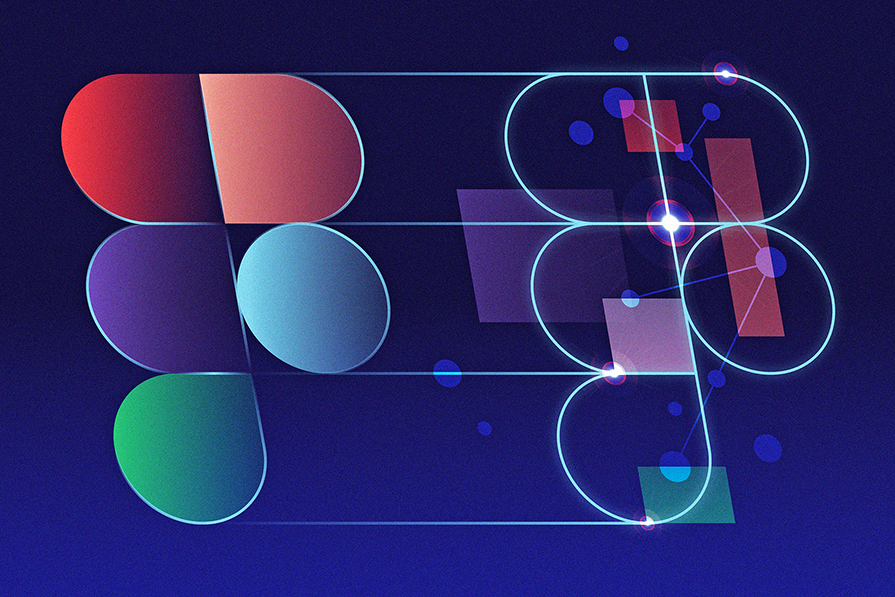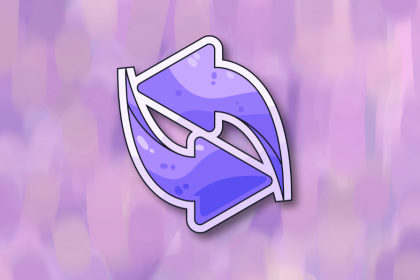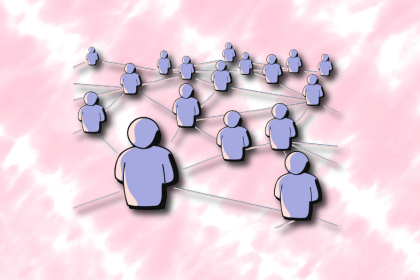I wonder if Figma’s cofounder, Dillon Field, knew just how widely used and successful Figma would become. While Figma as a company has been around since 2012, it wasn’t until 2015 that they launched their closed beta — the basis for the design tool we all know and now love.

Back then, it was a gutsy move, considering that Sketch was the go-to tool for most UI designers. But in design, things change. Nothing sticks around forever, especially if you don’t keep moving. Recently, Sketch hasn’t kept up, and the top spot it once claimed as the preferred design tool is no more.
Figma is the number one design tool today, and they’re keen to ensure they don’t end up like the previous victor, Sketch.
How? Well, Figma is on the brink of a significant transformation. While traditionally serving designers, there’s a growing anticipation that Figma will soon broaden its horizons, becoming a collaboration hub for everyone in an organization.
Some would argue that transformation is already taking place.
Even though Figma wasn’t the immediate choice for designers initially, it slowly earned its place as the preferred tool it is today. The recent news of an Adobe merger, which ultimately failed, highlights the immense value and potential of Figma.
How did this nimble and determined startup manage to catch the eye of the industry giants?
Figma reached this pivotal point by prioritizing a user-centric approach, channeling substantial investments into understanding and delivering what designers truly wanted, rather than simply imposing what the company believed they needed.
This commitment to listening and responding to the evolving needs and preferences of the design community has been a key driver in Figma’s success, fostering a platform that resonates with designers.
Contrastingly, Sketch missed the opportunity to evolve and retain much of the market. Their delayed introduction of a collaborative solution and the exclusive focus on Mac releases hindered their adaptability, distancing users who preferred designing on platforms other than Mac.
Sketch almost seems archaic up against the web-based offering from Figma. To serve as many people as possible, what better way to do that than by using a piece of software they already have? The browser.
Sketches’ philosophy, even now in 2024, doesn’t appear far removed from the historical perception of design. That perception was that design was often confined to the realm of designers, isolated from the broader team and emerging only when deemed essential.
This simply isn’t the case anymore. Design has transitioned into a collaborative process, whether designers like it or not. Figma seamlessly integrates into this collaborative design approach, positioning itself at the forefront of this transformative shift.
It’s as if the team had a clear vision of how design would evolve, stuck to it, and is now reaping the benefits of championing collaborative design:
Fundamentally though, the team at Figma is demystifying the entire process from planning to deployment. That goes way outside the normal remit of design.
Companies are making big organizational strides. Industries and roles beyond the design realm are recognizing Figma’s potential, with examples emerging across various sectors.
While Figma is primarily a tool for design, it offers a robust set of features that cater to the diverse needs of team members. It’s increasingly commonplace for product owners or business analysts to engage with publicly shared designs, facilitating their ability to offer valuable comments and insights.
Developers are actively participating, leveraging the newly introduced Developer Mode. Figma asserts that the current juncture presents an opportunity to accelerate the production journey and enhance collaborative workflows for all team members.
Stakeholders are using FigJam because they’re familiar with Figma, and it makes little sense to jump onto another collaborative platform if most of the team is using Figma anyway. Embracing this collaborative approach empowers the entire team, fostering efficiency and seamless integration of diverse skill sets.
Figma’s gotten bigger, mainly because tech has improved, making it simpler for folks to collaborate on a broader scale. They’re also actively making their platform better, more feature-rich, and more feature-divergent, bringing in a diverse group of users.
Is there a chance they might lose sight of their core identity as a design tool? So far, there are no indications of that happening even as they try to expand their features and reach new audiences.
The transformative impact of the COVID-19 pandemic further accelerated Figma’s relevance when remote work became more prevalent. The platform’s adaptability to this new normal reinforced its position as a vital tool for designers and teams worldwide.
Acknowledging this change, Figma introduced FigJam, a collaborative whiteboard tool seamlessly integrated with Figma. It empowers users to generate ideas, align on plans, and connect as a team. Positioned as “The online whiteboard built for company-wide collaboration,” FigJam aims to enhance the collaborative experience for users.
For example, Adyen, who is in the fintech space, wanted to bring its teams together for brainstorming and problem-solving. With FigJam, Figma’s collaborative whiteboard, they made their planning workshops more “enjoyable and productive.” Something that would normally require a meeting room, several people, and materials can now be done effortlessly online using FigJam.
It’s worth pointing out that, in theory, a designer doesn’t even have to be involved in these collaborative sessions. They could even be involved less, or spread across multiple teams. Whether or not that’s ideal is dependent on how teams work, but the possibilities are there.
Designers should, at the very least, encourage inclusivity and cross-functional collaboration. Where various team members contribute their insights and expertise, the entire team will foster a more comprehensive and well-rounded approach to problem-solving and innovation.
Designers should be involved at some level from a working norms perspective, but businesses are shifting in such a way that nondesigners should feel comfortable, empowered even, to get started in a collaborative process.
It’s up to nondesigners, and designers, to decide when it’s pertinent to get involved. Fundamentally, it’s about offering businesses more flexibility when assigning team members to projects.
This means that Figma is positioning itself not just as a design tool, but as a solutions tool for various teams across the business, as demonstrated on their testimonial page.
The real-world success stories stemming from these changes are already apparent.
The platform’s ability to facilitate collaboration across diverse roles, locations, and backgrounds is proving to be effective. This shift signals a more inclusive future for Figma, where it serves as a versatile and accessible tool for a wide range of users, fostering innovation and collaboration on a global scale.
FigJam faces a bit of a challenge in the collaborative arena, competing with Mural and Miro, but there’s little reason to doubt their eventual success if Figma is anything to go on.
For designers, this means a shift in how collaboration takes place. That might be an uncomfortable truth for some, but the reality is that it’s never been a better time to be a designer.
In essence, design is evolving into a more significant discipline, with companies prioritizing competitiveness in delivering user experiences that matter. Figma stands at the forefront of this transformative journey.
We’re already seeing the effects in most workplaces. Now that Figma is a tool for product teams, we get these benefits:
Now that more teammates will be collaborating in Figma, some burden will fall to the designers who’ve been using it all along:
With new software comes new problems, in addition to all those collaborative benefits:
The most obvious impact on organisational transformation is workplace relationships, especially among designers, developers, and stakeholders. As mentioned above, what was once a siloed experience now has the opportunity to become a more cohesive one.
Although we discussed the challenges nondesigners might encounter, this is essentially about shifting how people collaborate and providing suitable training to ensure they feel at ease with the new ways of working together.
“Encouraging your employees to work on cross-departmental projects, organizing regular knowledge-sharing sessions, and leveraging technology-enabled collaboration tools can enhance communication, break down silos, and promote the exchange of ideas.”
Figma’s capabilities extend beyond a singular focus, impacting overall organizational collaboration. By providing a shared space for design, development, and stakeholder input, Figma promotes a more integrated approach to projects.
This shift is perfect for cross-functional teams, as it encourages collective problem-solving and a holistic understanding of project requirements.
As organizations embrace this collaborative change facilitated by Figma, they must also navigate certain challenges. The increased interaction between different roles may lead to complexities in communication, requiring teams to develop effective strategies for sharing ideas and feedback.
Take, for instance, a project involving both designers and developers working closely. Differences in design terminology and technical language might lead to misunderstandings. Designers may use creative terms unfamiliar to developers, confusing and translating design concepts into functional code.
To ensure effective Figma workflows, the team could implement regular cross-functional workshops or meetings where designers and developers can collaboratively review designs and discuss technical aspects. This facilitates a shared understanding of the design vision and technical requirements, fostering better communication between the two roles.
Increased stakeholder involvement in the design process can introduce diverse perspectives and expectations. However, conflicting feedback from various stakeholders may pose a challenge in aligning design decisions with the project’s overall goals.
Establishing clear communication channels and documentation to capture stakeholder feedback. Using collaborative tools within Figma to annotate and discuss specific design elements allows for transparent communication, and regular feedback sessions can also help address conflicting opinions early in the process.
When designers collaborate closely with marketing teams on brand-related projects, such as creating marketing materials or campaigns, differences in design aesthetics and marketing objectives may arise. Designers might prioritize visual appeal, while marketers focus on conveying specific brand messages.
Conducting joint brainstorming sessions to align design aesthetics with marketing goals. Creating a style guide within Figma that integrates both design principles and marketing messaging helps maintain consistency. Regular check-ins and open communication channels ensure that design decisions align with the broader marketing strategy.
Teams aspiring to enhance collaboration can always find solutions to overcome challenges. Open communication channels, regular training, and fostering a culture of adaptability can address issues effectively.
Establishing clear guidelines, embracing technology that facilitates collaboration, and encouraging a mindset of continuous improvement contribute to building a more collaborative and cohesive team
The transition to a more collaborative model necessitates a mindful approach to overcome these challenges, allowing organizations to harness the full potential of Figma in reshaping workplace relationships and enhancing overall project outcomes.
Looking ahead, the future for Figma holds exciting prospects, particularly in reshaping the dynamics of job roles and relationships within collaborative teams. The traditional divide between job functions may blur further as Figma continues to emphasize inclusivity and collaborative design processes.
The platform’s user-friendly nature and real-time collaboration features can foster a more integrated approach, allowing team members from various roles to contribute seamlessly.
As Figma becomes an integral part of the collaborative work environment, the distinctions between roles like designers, developers, and stakeholders may become less pronounced, promoting a holistic and cross-functional teamwork ethos.
There’s a strong indication that Figma and its collaborative whiteboard tool, FigJam, will extend their reach into workplaces that have not previously embraced Figma. As the demand for collaborative tools grows, Figma’s adaptability and user-friendly design make it well-positioned to become a standard across diverse industries.
This expansion into new territories of work environments may signify a transformative shift, with Figma becoming a universal platform for creative collaboration. Simultaneously, the speculated demise of Sketch might be a consequence of Figma’s broader appeal and continuous innovation, as more teams recognize the advantages of a collaborative design approach over traditional, isolated tools.
We can expect to see more changes going forward to how we approach design collaboration. Look forward to it!
LogRocket's Galileo AI watches sessions and understands user feedback for you, automating the most time-intensive parts of your job and giving you more time to focus on great design.
See how design choices, interactions, and issues affect your users — get a demo of LogRocket today.

Discover how to craft UX-friendly hero sections with examples, design tips, and strategies that drive engagement and conversion.

I once sent a half-written email by accident, until Gmail saved me with an Undo button. Those tiny moments define trust in UX. In this guide, we’ll break down how to design reversible actions, when to use them, and how to choose the right recovery pattern for your product.

Small qualitative samples aren’t a weakness. They’re a strategy. This guide breaks down the evidence, the mindset gap, and how to build trust around research decisions.

From pixel art to neon palettes, retro design is resurging across marketing, gaming, fashion, and indie web. Learn how nostalgia, brand differentiation, and anti-minimalism fatigue are shaping modern UX and how to balance style with usability.